So, you’ve found your perfect Spanish home. The chances are you will want to decorate it to reflect your tastes. But how would you go about it and where can you find inspiration? Our Spanish writer Sally, who also happens to be a retired interior designer, gives us her top tips for decorating your Spanish home…
Magazines
I would really advise you to buy as many Spanish house magazines as you can. There are a large variety available (and most are a lot cheaper than English magazines) all readily available at newspaper shops and larger supermarkets. Elle Decor is quite upmarket, El Mueble covers midrange budgets and Mi Casa and Casa Diez are lightweight but fun. Other great magazines include Casa y Jardín, which is the Spanish version of House and Garden, and Interiores, which is very grown-up.
All of these will show you what the trends are in Spain, and you will find that often they are not the same as those in the UK. This is mainly due to the different climate; after all, you won’t want heavy curtains and upholstery fabrics when temperatures can reach the high 30s or even 40s! Dark painted walls don’t tend to be popular either, though you will often find an accent wall painted a different colour from the rest.
If you are living in a mountainous region, you might want to go for a warmer feel, but it can get quite hot in the summer so you will want an interior that is easily adaptable to the seasons.
Magazines will show you what the trends are in Spain
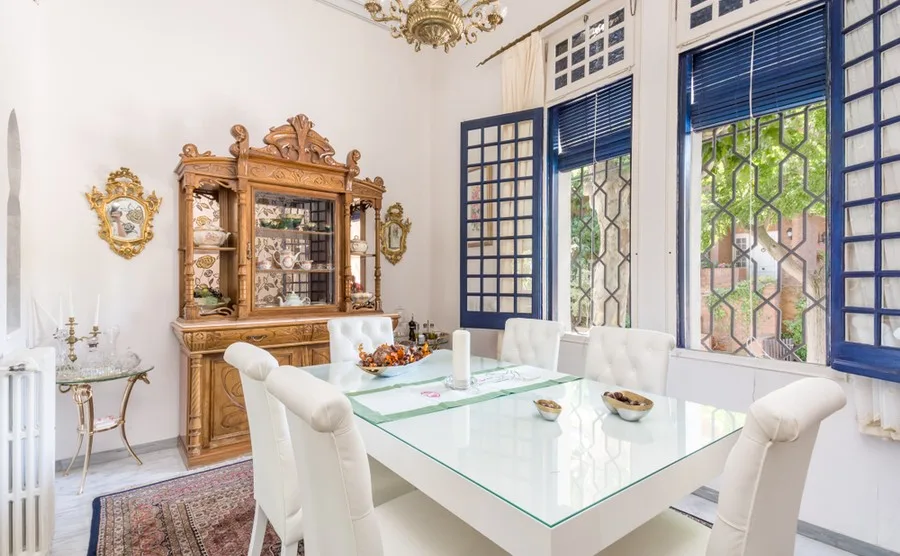
Bright and clean open interior with a minimalist design
TV programmes
Even if your Spanish isn’t great, watching Spanish TV programmes about homes and interiors can really help to inspire you. There are several, but I suggest Bricomania which is one of the few home-grown Spanish shows. Decogarden and Vaya Casas which presents homes of the rich and famous also has plenty of ideas for you to copy. There are lots of others to watch, but they come from the USA, Canada and Australia.
Décor websites
For the latest trends in design and furniture, you might enjoy surfing the many websites available. Westwing Now is a French company with a great Spanish website. They have a discount site too, Westwing, which offers a daily newsletter of discounted items which can range from kitchen equipment to lighting, towels to art, furniture to rugs.
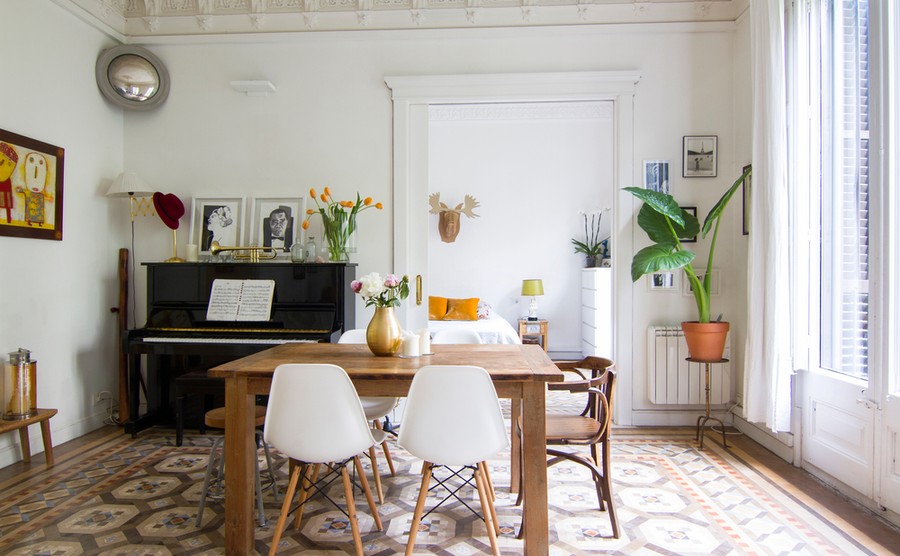
Flat with hydraulic tiles in Barcelona. Alex Colom _ Shutterstock.com
Another good site is Zara Home, which is ideal for bedlinen and small decorative items. The Portuguese shop, A Loja de Gato Preto, is particularly good for tableware, bedlinen, lighting and smaller things. The French company, Maisons du Monde is another great source for ideas, but if you want something more British, have a look at Next.
Second-hand markets and shops
Most towns will have a second-hand market and shops. Some have charity shops too, and they are all great places to find items for your Spanish home. I have found wallpaper (unused rolls), furnishing fabrics, glorious linen and numerous other decorative items in my local charity shops and flea markets. Saturday or Sunday mornings are the usual days for the markets, and it’s a lovely way to spend a morning wandering around in the sunshine looking for that special find. Paintings are something to seek out too, rather than using commercial art.
Find homes for sale in Spain
Spain isn’t in the same league as Britain when it comes to DIY (though my neighbour doesn’t think so!). Having said that there are some excellent DIY stores in Spain, one of the largest being the French company, Leroy Merlin. The German firm Bauhaus can be also found in most larger towns, and Bricomart and BricoCentro popular stores too.
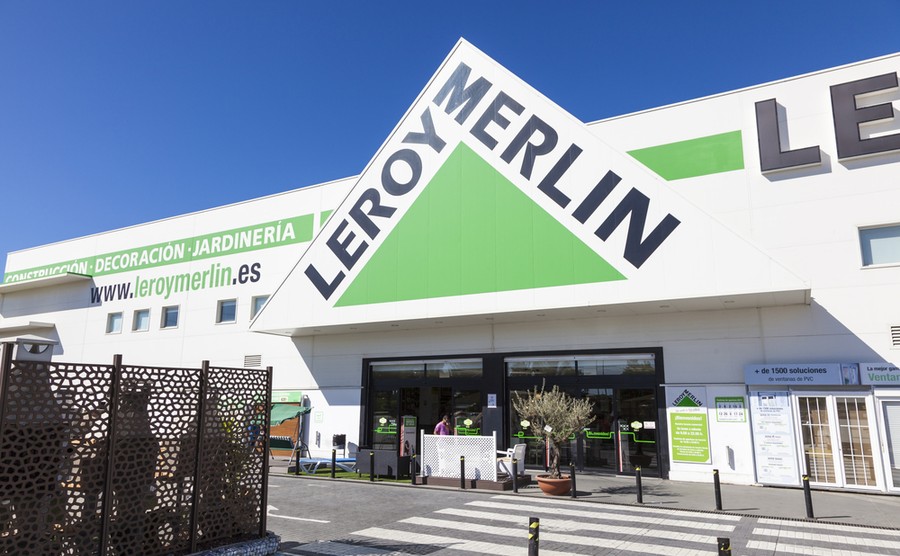
Leroy Merlin store in Spain. Philip Lange Shutterstock.com
Another store is BigMat, which is mainly for professionals, but they can also supply individuals and can found all over Spain. Of course, an Ikea is never too far away, and they are actually starting to open smaller city centre stores in some areas too.
However, you will also find a good range of tools and equipment in the local Chinese shops, including electrical and garden items. The prices here will be considerably cheaper than in the big stores and often you will recognise brands.
An Independent Financial Advisor can be an enormous help with giving impartial advice on organising your budget. We can put you in touch with a trusted partner who has plenty of experience helping UK buyers moving to Spain.
But we shouldn’t forget local DIY shops. This is where you will get a more personalised service, often with competitive prices. They can’t carry the same range of stock as the big names but can usually order anything in for you. Personally, I like to support these shops and have received some very useful advice in my local paint store.
Finding a painter/decorator
Not everyone is into DIY, so how do you go about finding a good painter/decorator? One way is to look on the notice boards in DIY stores where professionals advertise, or you can ask for recommendations while you are in the shop.
Word of mouth within the local community is another reliable way to find a good artisan painter. Get to know your local barman too, as he will often be a source of useful information. Though be aware, he may be recommending his cousin’s cousin!
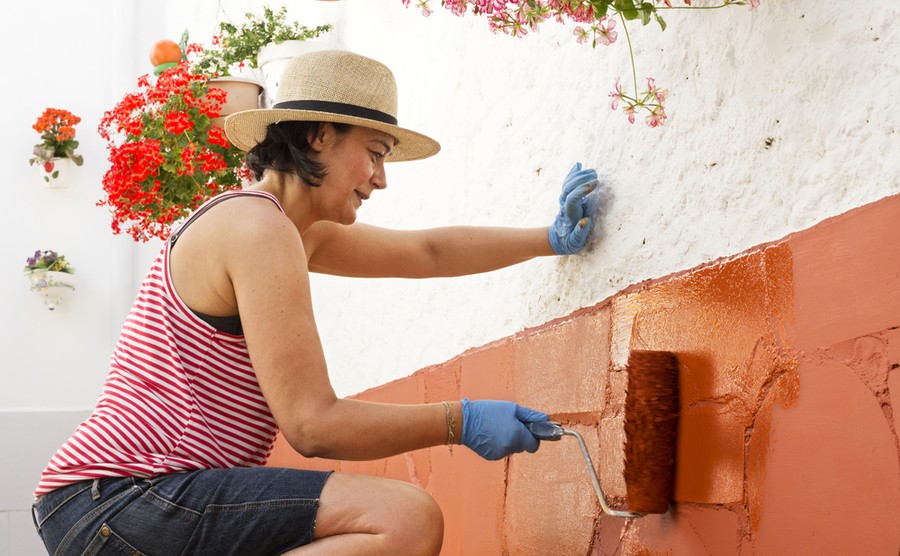
Word of mouth is a great way to find skilled painters and decorators
You can usually ask to see some completed work before committing yourself to somebody. Some local professionals will put flyers in local shops, tobacconists and bars. In areas where there are many British people, you will often be able to find an English-speaking painter, or even a British person. If you are in an area with few others from the UK, learn a few Spanish words and expressions to do with painting and decorating to help you to communicate – this really pays off.
Word of mouth within the local community is a reliable way to find a good artisan painter
Furniture and decorative items
The current trend in Spain is natural fibres, lightweight furniture, modern minimal lighting and soft colours. A large, heavy sideboard is no longer Spanish style, though traditionally, Spanish furniture tended to be sturdy, solid, and well crafted.
If you have an heirloom that you just had to bring to Spain, check out Pinterest for ideas of revamping it to fit into a generally lighter feeling home. There are numerous paint finishes you can use to bring it up-to-date.
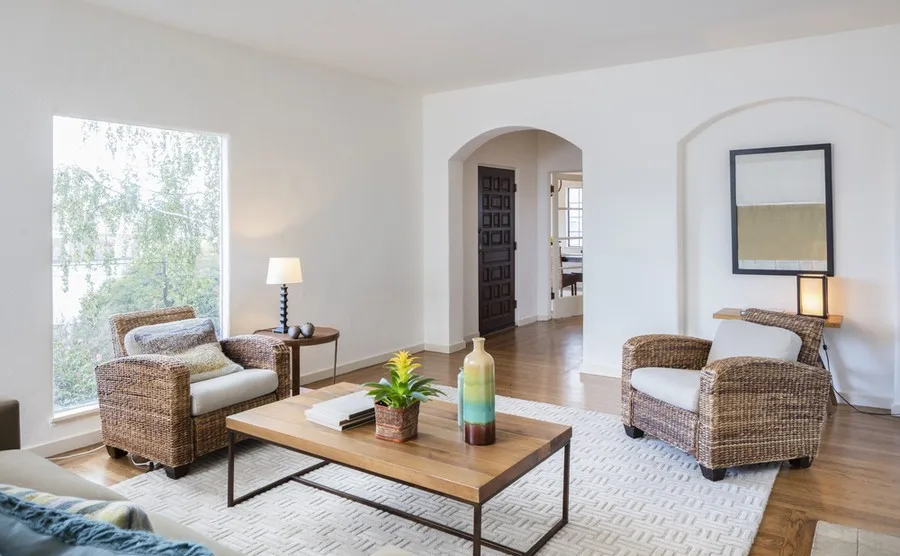
The current trend in Spain is natural fibres, lightweight furniture, modern minimal lighting and soft colours.
Seagrass, bamboo, rattan and wicker are all the rage now and available throughout the country. Some of the larger Chinese shops sell furniture and other objects made from these natural materials.
When it comes to statement pieces such as small vases, bowls, candle holders or planters, have a wander round local markets as you can sometimes find unique handmade pieces there.
I would also suggest going to areas where there are artisans’ studios and shops to find that special item and to truly discover the wonderful craftsmanship that lives on in Spain.
Read the free Emigration Guide to find out everything you need to know about moving abroad.
By the way, if you happen to be driving to Spain, do stop off at La Bisbal d’Empordà – a town under an hour from the French border – where there are literally dozens of shops and outlets for handmade, hand painted ceramics, some of which are high-end and really lovely. You will also pass many large ceramic mega-stores located by busy main roads throughout Spain and it might be worth a stop in one or two for that large garden pot you will need for your lemon tree.
Colours and design
Walls in Spain tend to be light and neutral – all the shades of white and off-white. This is because the country enjoys up to 300 days of sunshine a year, and whites reflect it best.
Floors are not carpeted but tiled, usually a shade of terracotta or light creams. Spain is renowned for its beautiful tile designs and vintage tiles are a great way to bring some colour and traditional Spanish influence into your home. In older houses you might be lucky enough to inherit an art deco tile floor, but you can also buy modern versions of these tiles at most good tile stores.
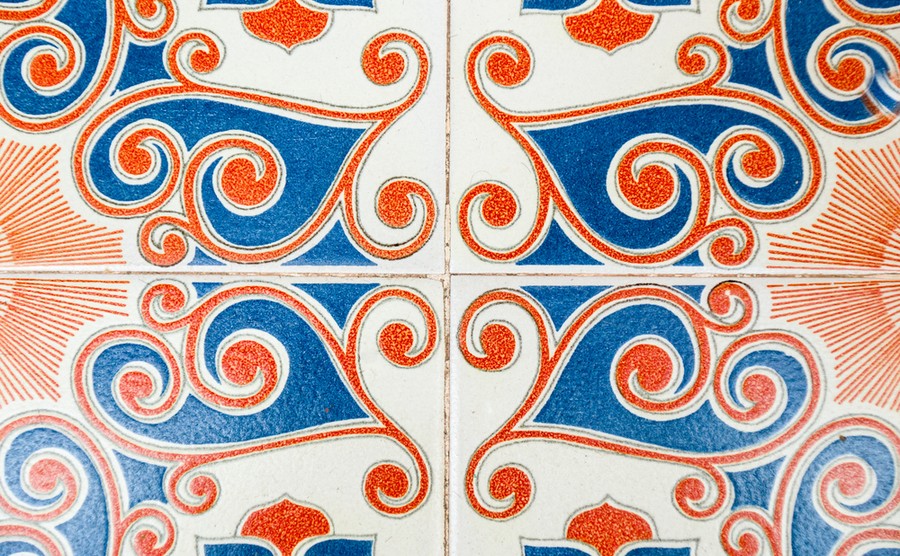
Vintage Spanish tiles
Also, seek out the tile reclamation places, often hidden away, where you can pick up some glorious old tiles to make a table or perhaps a splashback.
Curtains tend to be lightweight and in soft colours, though most Spanish houses and apartments opt for blinds. You might decide not to use curtains at all, or perhaps some very light ones, just to soften the often harsh framing for the French windows or double glazing.
Vintage tiles are a great way to bring some colour and traditional Spanish influence into your home
Spanish kitchens are rather stark but functional. Floors and walls are tiled and units are usually in wood or neutral colours. You can have a lot of fun cheering them up with colourful bowls, trays, or even by creating a display on one wall with a shelf of plants or fruit.
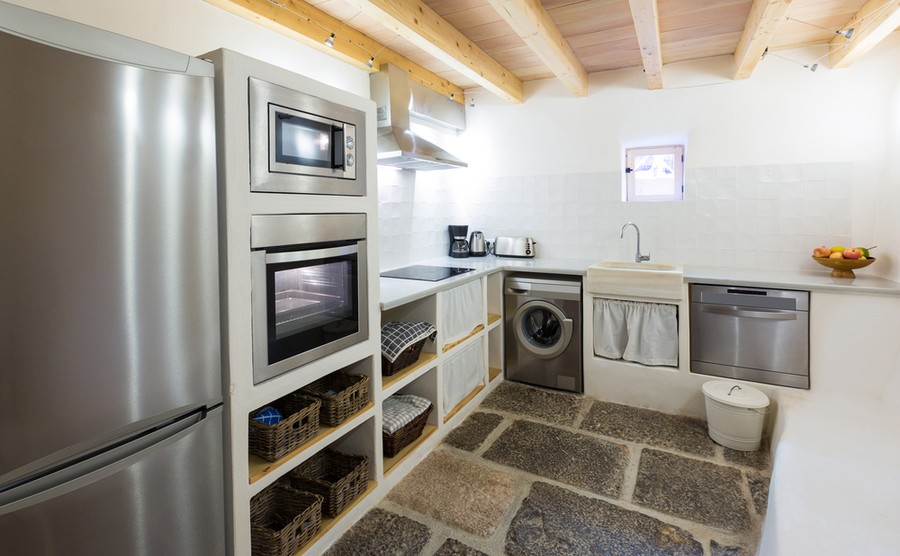
Kitchen with Mediterranean architecture of Mallorca
You could even design a “cottage kitchen” around the units to bring in some life. This involves rows of flowers in old jam jars, wooden utensils on the walls, a blackboard with shopping lists and so on. None of these ideas are expensive and your local Chinese shop will usually have what you need.
Rugs are popular because of the tiled floors, and you can find every type from kilims to the latest designs.
Decorative and useful, they still make baskets in Spain! Most towns will have at least one basket shop where you will also find lots of other things made of cane or wicker. Baskets are great for hiding stuff, as a plant holder, shopping, as a fruit holder, for laundry or just to look pretty.
Be adventurous!
I’m sure you will have great fun decorating your Spanish home in a style which might be new to you. There are so many places to visit, so many ideas to be seen and decor to suit all budgets.
Be adventurous and find out where the artisans are, where your local flea market is, where your nearest DIY store is located, and spend a little time looking at websites to give you fresh ideas and make your home yours!












